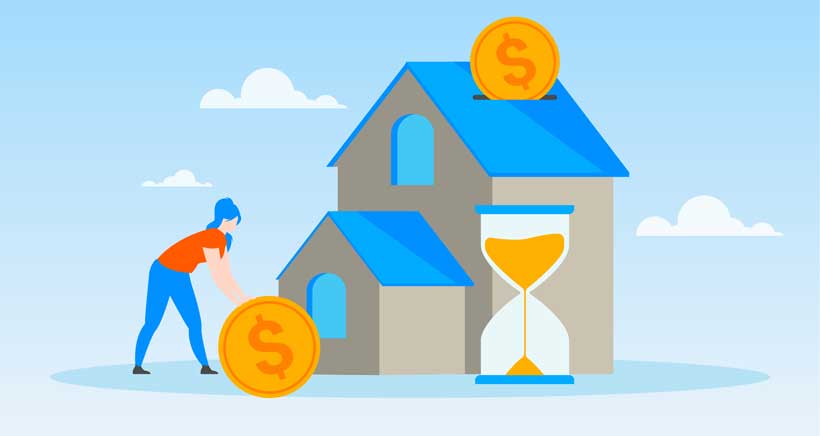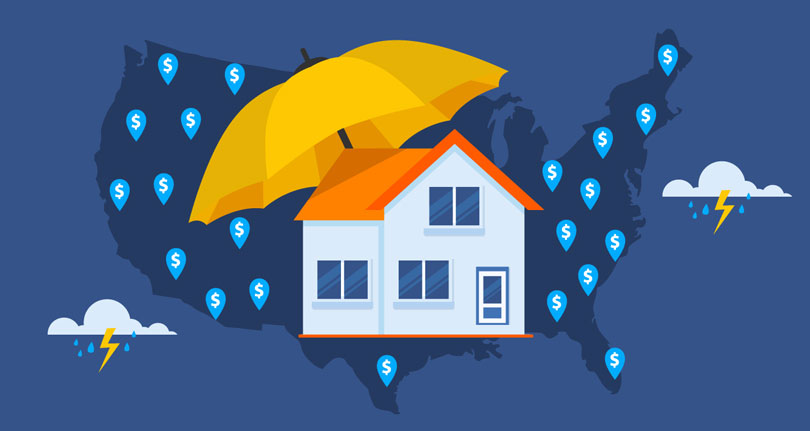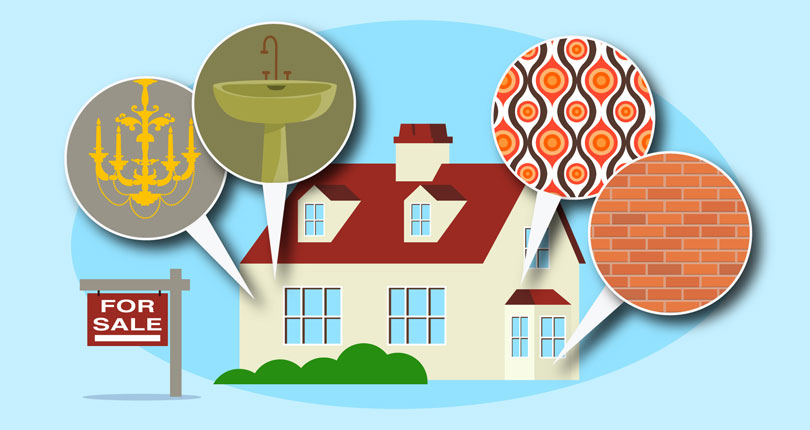How long does it take to save for your first home in each state?

Saving up for your first home is likely the largest financial goal most of us will ever have. This can be incredibly challenging for many homeowners trying to get their first step on the property ladder due to the costs involved, especially when reports anticipate that home prices will rise 16% in 2022.
We wanted to work out exactly where in the country is the easiest to save up for your down payment based on the average cost of living for the region, average income, and of course home price. By analyzing a large number of factors in our first-time homebuyer research, it allowed us to get a comprehensive analysis of each state for how challenging it is to save up for your first home while paying rent and living your life.
See the data below to find out how the average first-time homebuyer can afford to buy, as well as how this differs for men, women and couples.
Key findings:
- Two-person households can save for a down payment and closing fees in an average of 12.2 months nationwide.
- The average single female cannot afford a down payment in all states however, the average single male can afford it in 34 states.
- The average first-time homebuyer down payment (6%) across all states is $12,274.
- First-time homebuyers are expected to pay an average of $1,983 in closing costs on top of a down payment.
- The pandemic has caused the average first-time home to increase by 21.5%, that’s $35,466 extra on the overall average cost since 2019.
First-time homebuyer down payments in each state
The average down payment (6%) [1] National Association of Realtors, ‘Highlights From the Profile of Home Buyers and Sellers’ https://www.nar.realtor/research-and-statistics/research-reports/highlights-from-the-profile-of-home-buyers-and-sellers for first-time homes across the country is $12,274, in addition to this, the average homebuyer is expected to pay $1,983 in closing costs. That can be a huge amount to save for many people especially when they are already paying rent and other living costs.
In the following map, you can see where first-time homebuyers can afford to buy a home when living a statistically average life, including rent, for their age and region.
We have analyzed the exact number of days, months and years it would take the average person to save up enough for the necessary down payment and closing costs in that state, providing they were living an average life and renting a one-bed property.
You can see the difference between men, women, couples, and how the pandemic has changed the first-time homebuyer market too.
Best states when saving for a first home
Using data for the average first-time homebuyer (a combination of male/female data, aged 32 years) [2] Consumer Financial Protection Bureau, ‘Market Snapshot: First-time Homebuyers’ https://files.consumerfinance.gov/f/documents/cfpb_market-snapshot-first-time-homebuyers_report.pdf we can see that the easiest states to rent are the following, ordered by the number of years it would take the average solo buyer to save up the deposit and closing costs:
- Connecticut (14 years)
- North Dakota (17.4 years)
- Minnesota (28.8 years)
- Alaska (36.9 years)
- Massachusetts (77 years)

How to Rent with Bad Credit
Leasing an apartment or home with bad credit can be a challenge, but if you follow the right steps some landlords may be willing to work with you.
Download our guideWorst states when saving for a first home
In all states aside from six, the average first-time homebuyer, living an average life, earning an average wage, will not be able to save any money each month for a home.
With that in mind, the following five states are the worst environments for first-time homebuyers due to spiraling costs. In these states, the average first-time homebuyer is losing money every month, due to salary not meeting average lifestyle spend, therefore will never be able to afford a property.
- Florida (-$798 each month)
- California (-$654 each month)
- Hawaii (-$615 each month)
- Mississippi (-$596 each month)
- New Mexico (-$475 each month)
Couples can afford to buy in every state
The purchasing power of heterosexual couples, based on male-female two-person household data, is the reason they can afford to save up for a down payment and closing costs in every state. It takes male-female couples an average of 12.2 months; just over a year to buy their first home across the U.S. This average can range from just under 6 months in Iowa, to 3.3 years in Florida.
In South Carolina, a state where the time-to-save is closest to the average, couples can save up for the average first home in 12.3 months. In South Carolina, a single male would need an extra $52.31 each month to not be in debt, and a female would need an extra $807. This is while living an average life in the state due to the living costs being higher than the average salary for men and women aged 25-34.
Statistically, male same-sex couples would have stronger purchasing power than heterosexual and female same-sex couples due to the higher average salaries men have. While men can afford to buy in more states than women, four of those states: Texas, Delaware, Montana, and Maine, would require between 14 and 68 years to save up the needed funds, making them technically affordable, while being unrealistically so.
Data from the U.S. Census Bureau [3] United States Census Bureau, ‘American Community Survey: Earnings in the Past 12 Months’ https://data.census.gov/cedsci/table?q=median%20earnings%20by%20state&tid=ACSST1Y2019.S2001, which fed into a part of this analysis, shows that, after-tax, men aged 25-34 earn an average of $3,061, whereas women earn an average of $2,235. When two men are coupling their savings for a home, they are evidently more likely to save quicker than two women.
COVID-19’s impact on first-time homebuyers
At a state level, we looked at the pandemic’s impact on first-time homebuyers to find out how much extra they are expected to pay, and how this has impacted saving for their first homes.
The average first home has increased by more than $35,400 since 2019 due to the pandemic.
From 2019 to 2021, the average first-time home increased by 21.5%, in financial terms, that’s around $35,466. Alaska was the only state to see a decrease in first-time home prices (-7.6%), and Montana saw the highest increase at 41.5%.
For couples who are looking to buy their first home, across the U.S., the time taken to save the required funds has only been increased by 2.1 months due to their combined purchasing power.
However, if the average first-time homebuying couple were to try to compete with repeat buyers, who typically place a 16%, rather than a 6% deposit, it would take an average of 40 months (3.3 years) to save just for the deposit without considering closing costs.
Methodology
We used median home value data from Zillow on the average first-time home in each state and calculated a 6% down payment, as stated by the National Association of Realtors, which is the average for first-time homebuyers. We reviewed the average closing costs per state, and applied the percentage of sales price figure to our home value data. This data uses the assumption that buyers will pay 60% of the total closing costs, with the rest paid for by sellers.
We used the median earnings for individuals in each state aged 25-34, the typical age range for first-time homebuyers, and applied federal and state taxes. Expenditure data from the U.S. Census Bureau was used for this age range to analyze utilities, food, clothing, healthcare, entertainment, pension, and insurance spending. Earnings and expenditure data was adjusted for males, females, and couples based on U.S. Census Bureau statistics for the relevant age range. The monthly median rent was based on a one-bed property in each state.
In this analysis, couples refers to a male-female two-person household as dictated by the Bureau of Labor Statistics. In their dataset, two-person households are typically close to 50-50 male and female.
The average salary was compared against the total cost of living to analyze funds for the average first-time homebuyer in each state. This was then used to calculate how many months this individual would need to save for the necessary down payment and closing cost in the region.
In terms of the map colors, 0-120 months (0-10 years) is defined as green, 120-150 months is orange, with anything above 150 months (12.5 years) being colorized as red.
Sources
- 1National Association of Realtors, ‘Highlights From the Profile of Home Buyers and Sellers’ https://www.nar.realtor/research-and-statistics/research-reports/highlights-from-the-profile-of-home-buyers-and-sellers
- 2Consumer Financial Protection Bureau, ‘Market Snapshot: First-time Homebuyers’ https://files.consumerfinance.gov/f/documents/cfpb_market-snapshot-first-time-homebuyers_report.pdf
- 3United States Census Bureau, ‘American Community Survey: Earnings in the Past 12 Months’ https://data.census.gov/cedsci/table?q=median%20earnings%20by%20state&tid=ACSST1Y2019.S2001
- Self Financial, ‘First-time homebuyer statistics’ https://www.self.inc/info/first-time-homebuyer-statistics/
- Zillow, ‘United States Home Values’ https://www.zillow.com/home-values/
- Tax Foundation, ‘2022 Tax Brackets’ https://taxfoundation.org/publications/federal-tax-brackets/
- Tax Foundation, ‘Center for State Tax Policy’ https://taxfoundation.org/center/state-tax-policy/
- U.S. Bureau of Labor Statistics, ‘Median usual weekly earnings of full-time wage and salary workers by age’ https://www.bls.gov/news.release/wkyeng.t03.htm
- ClosingCorp, ‘CLOSINGCORP REPORTS AVERAGE CLOSING COST DATA FOR PURCHASE MORTGAGES IN 2020’ https://www.closing.com/wp-content/uploads/2021/03/CC_2020ClosingCostsReport_FINAL_031121.pdf





